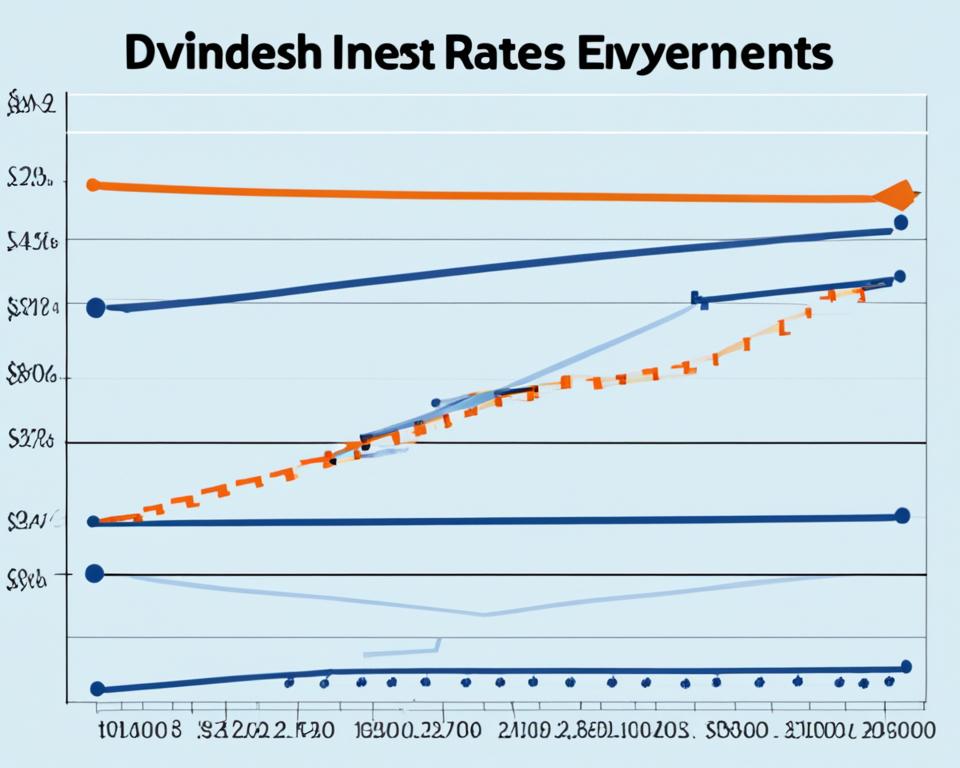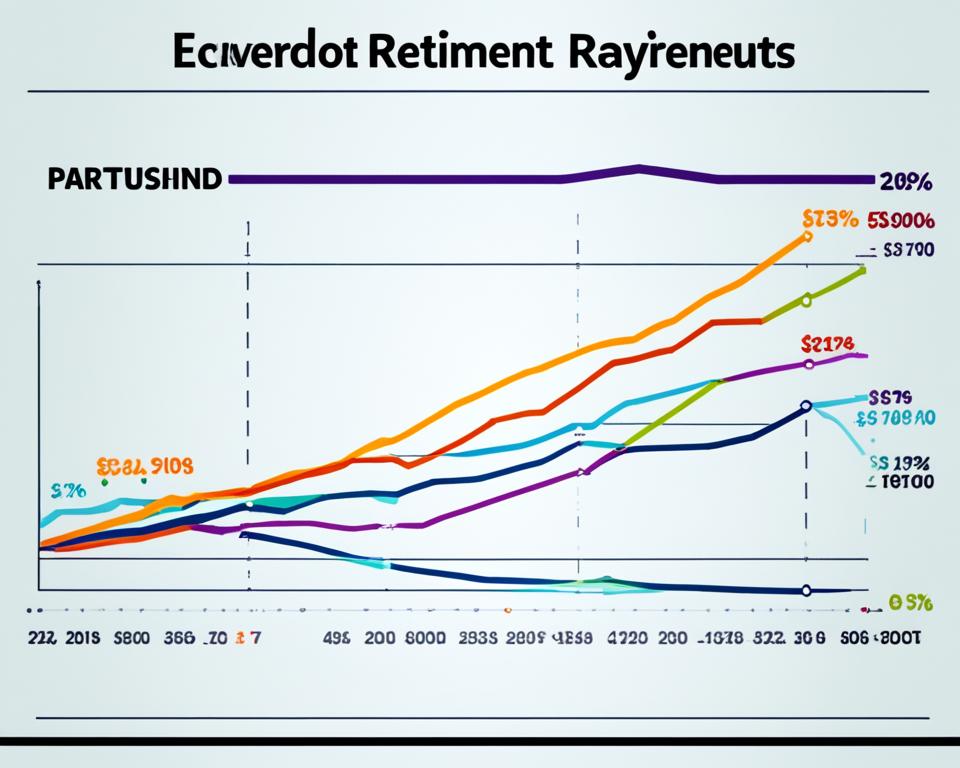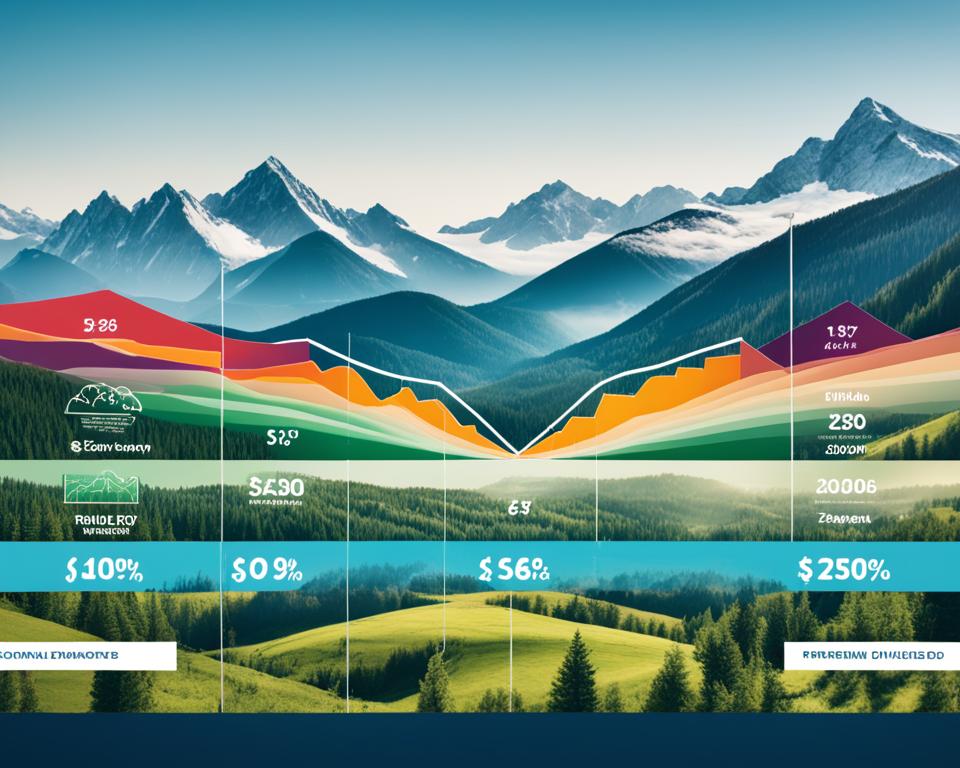Ever wonder how shifts in interest rates can influence a carefully composed dividend portfolio? Interest rates play a crucial role in the economic landscape, swinging the pendulum of profitability for both companies and investors. These fluctuations, particularly in a post-2009 era of low interest rates, subtly but significantly influence the attractiveness of dividend-paying stocks.
As these rates alter, the impact on dividend portfolio management becomes dynamic. The profitability of stocks and their appeal to investors necessitate a strategic response. Why is this important? Because any changes in earnings and yield perceptions direct the flight of investor assets, especially in comparison to fixed-income alternatives.
Let’s dive into this intricate correlation and examine how you, as an investor, can adapt to these changes to secure a profitable edge. Strange as it may sound, the invisible forces of interest rate changes can set ripples across the stock market, particularly impacting the dividend arena.
Key Takeaways
- Interest rate changes have a substantial impact on the profitability and attractiveness of dividend-paying stocks.
- In the post-2009 era of low interest rates, these stocks have held a vital position in investment strategies.
- Interest rate fluctuations necessitate a pivot in investor strategy in response to changing perceptions of earnings and yield.
- Interest rate alterations can create a large-scale impact on dividend portfolio management, affecting the entire stock market ecosystem.
- Informed understanding and strategic response to these fluctuations can secure investor advantages, fostering strong and profitable portfolio management.
The Role of Dividends in Equity Returns
Dividends play a cardinal role in bolstering the overall return on investments in the stock market. As a monetary reward from corporations to their shareholders, dividends indicate a company’s financial health and stability. A key marker of a robust dividend portfolio performance involves regular and increasing dividend payments. Let’s delve deeper into the intricacies of dividends and their impact on equity returns.
Understanding Dividends and Their Contribution to Total Returns
Dividends are a distribution of a portion of a company’s earnings decided by the board of directors, paid to a class of its shareholders. Dividends can be issued as cash payments, as shares of stock, or other property, though cash dividends are the most common. Along with capital appreciation, dividends form the total return on investment of a dividend-paying stock.
Comprising significantly of total returns, dividends demonstrate the company’s profitability and its ability to generate steady income. According to a report by Standard & Poor’s, they have historically accounted for approximately a third of total U.S. stock market returns.
Historical Performance of Dividend-Paying Stocks
When dissecting the historical performance of dividend-paying stocks, it emerges that these stocks have generally outperformed non-dividend paying stocks over long periods. The power of compounding resulting from regular dividend payments and the reinvestment of those payments significantly boosts the total return, providing dividend-paying stocks an edge.
Moreover, dividend-paying stocks provide the benefit of potential income along with the capital appreciation and act as a buffer during downward market cycles. The cash flow from dividends, especially those steadily increasing, offers a cushion during periods of market uncertainty.
To sum up, a discerning investor, focusing not just on short-term price gains but also on reliable long-term returns, would undeniably appreciate the substantial role dividends play in equity returns. They constitute a significant component of total market returns, providing a steady income stream and improving the robustness of an investment portfolio.
Deciphering Dividend Payout Ratios
In the world of dividend investing, understanding key metrics such as dividend payout ratios can be pivotal in formulating a successful investment strategy. These ratios, express the relationship between dividends per share (DPS) and earnings per share (EPS), provide insights into the company’s dividend distribution policy, and indicate the sustainability of dividends amid interest rate fluctuations. They represent the proportion of a company’s earnings that are being paid to shareholders in the form of dividends.
EPS and DPS: Core Components of Payout Ratios
Earnings per share (EPS) is a measure of a company’s profitability and dividends per share (DPS) indicates the sum of declared dividends for every ordinary share issued. Both of these components play a crucial role in determining the dividend payout ratio, which is typically calculated annually to smooth out quarterly inconsistencies.
The dividend payout ratio not only varies across different industries but can also be significantly affected by changes in interest rates. This financial indicator can serve as a useful tool for investors looking to comprehend the risk and return potential of a dividend-paying stock under different interest rate conditions.
The Sustainability of Dividends Over Time
The sustainability of dividends is another critical aspect that dividend investors should consider. A lower payout ratio often indicates better sustainability as it suggests that the company has sufficient earnings to support its dividend payments. Conversely, payout ratios that exceed 100% can signal potential risk for continued payments as they may imply that the company is paying more in dividends than they are earning. In context with interest rate fluctuations, companies with high payout ratios may find it harder to maintain their dividend levels during periods of rising interest rates.
Let’s consider the following table showcasing the payout ratio and sustainability of three prominent sectors: Technology, Healthcare, and Utilities.
| Sector | Average Payout Ratio (%) | Dividend Sustainability |
|---|---|---|
| Technology | 35 | High |
| Healthcare | 45 | Moderate |
| Utilities | 60 | Low |
In conclusion, keeping an eye on the dividend payout ratio can help investors gauge the potential impacts of interest rate fluctuations on their dividend investments. Moreover, by considering the sustainability of dividends, investors can make an informed decision about which stocks could prove resilient in various economic scenarios.
Interest Rate Effects on Dividends and Sector Sensitivity
Understanding the dynamics of interest rates and their effects on various economic sectors is pivotal for investors. Interest rates can considerably impact the performance of dividend-paying stocks in the stock market. Particular sectors, such as utilities, telecommunications, and Real Estate Investment Trusts (REITs), are remarkably sensitive to adjustments in interest rates due to the high levels of debt these sectors tend to shoulder.
Debt Servicing and Profitability During Rate Changes
When investing in interest rate sensitive stocks, it’s crucial to consider the role of debt servicing amidst changing interest rates. Increase in the rates can lead to heightened debt servicing costs, thereby affecting the profitability of a firm. For entities carrying considerable debt, the upturn in interest rates often goes hand in hand with reduced profitability, eventually impacting the company’s capacity to sustain stable yield on dividends.
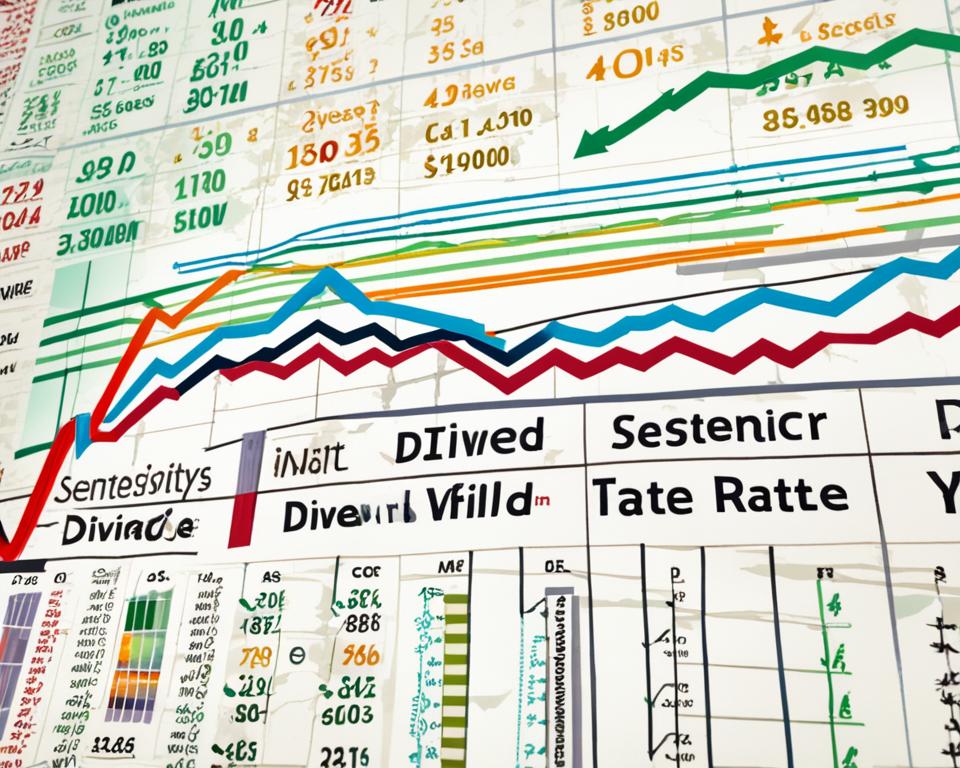
Understanding Interest Rate Sensitive Sectors
Sectors that typically bear hefty debts, such as utilities and telecommunications, are notably susceptible to variances in interest rates. Treading cautiously in these sectors could help stakeholders protect their investments from unforeseen fluctuations resulting from interest rate shifts. On the other hand, a reduction in interest rates can positively impact the profitability of such firms by slashing interest expenses, thereby enhancing the attractivity and performance of dividend stocks. It is therefore critical for investors to comprehend the interest rate risk and its potential effects on their investment portfolios.
| Sector | Debt levels | Sensitivity to Interest rates |
|---|---|---|
| Utilities | High | Significant |
| Telecommunicatons | High | Significant |
| Real Estate Investment Trusts (REITs) | High | Significant |
Corporate Profitability and Dividend Payouts
With currently abuzz discussions in the financial world regarding interest rate effects on dividends, we deem it crucial to understand the impact of interest rate policies on corporate profitability and, subsequently, dividend payouts. This segment concentrates on the interaction of rising rates and the high-debt companies and how they maneuver through them while managing dividends in a changing rate environment.
Interest Rate Changes and Dividend Paying Companies
For dividend-paying companies, higher interest rates often mean increased debt servicing costs, which can squeeze corporate profitability. This can dampen a company’s capacity to issue dividends. Sector-wise, companies with high leverage – such as utilities, telecommunications, real estate investment trusts (REITS), etc. – are most vulnerable in this scenario.
| High Leverage Sectors | Impact of Rising interest Rates |
|---|---|
| Utilities | Increased debt servicing costs |
| Telecommunications | Profitability squeeze |
| REITS | Reduced capacity to issue dividends |
Adverse Effects on High-Debt Companies
Apart from the hiked costs of borrowing, high-debt companies face a host of other challenges in a rising rate environment. One notable impact is related to currency value. A strong U.S. dollar, often a result of potentially increasing rates, can diminish a company’s foreign earnings, affecting overall profitability and consequently dividend payments. Additionally, they can also negatively affect commodity prices, adding another layer of complexity to the dilemma of managing dividends.
“The impact of interest rate policies on dividends cannot be underestimated. Investors and companies need to keep a vigilant eye on the changing rate environment.”Financial Analyst
Thus, for companies and investors alike, awareness and understanding of how interest rate policy dividends work is a prerequisite for active participation in the financial market. For those seeking to manage dividends effectively, adapting to shifts in the interest rate environment is an absolute necessity.
Yield Competition: Dividend Stocks vs. Fixed-Income Securities
In the competitive investing landscape, understanding the relative attractiveness of high yield securities such as dividend stocks and bonds is crucial, especially amidst rapidly changing interest rates. Keeping a keen eye on bond market competition can illuminate dividend strategies in a changing rate environment.
Comparing Dividend Yields with U.S. Treasury Yields
When diving into the intricacies of fixed-income securities, U.S. Treasury Yields are a common benchmark for safety and return. Yet, their behavior as interest rates vary drastically impacts the attractiveness of dividend strategies. Rising bond yields can pose a challenge to dividend stocks, as they offer safer, yet comparable returns.
Let’s consider some data depicting the comparative yields:
| Year | Average Dividend Yields | 10-Year Treasury Yield |
|---|---|---|
| 2018 | 1.8% | 2.91% |
| 2019 | 1.9% | 2.14% |
| 2020 | 2.0% | 0.88% |
The table illustrates the dynamic nature of both dividend yields and treasury yields over a span of three years, highlighting the tight competition between the two asset types.
Asset Allocation and the Search for Yield
The investor’s perpetual search for yield takes the center stage when portfolio adjustments are being made in response to changing rate environments. When rates are high, bonds become more attractive due to their higher yields and lower risk profile, often resulting in an investor migrating from equities to bonds. Conversely, lower interest rates can make dividend stocks more appealing, as they possibly yield higher returns. Herein, the delicate balance of asset allocation strategies is shaped by the interplay between dividends and interest rates.
Dividend strategies in changing rate environments are a mastery that investors must hone, staying responsive to bond market competition and continually adjusting asset allocation for optimal yield balance.
Inflationary Trends and Dividend Portfolio Adjustments
Inflation and rising interest rates play a significant role in shaping the dynamics of dividend portfolio management. As they hold the potential to impact stock valuations, proactive strategies become imperative to facilitate necessary portfolio adjustments and to ensure favorable investment outcomes. In this section, we delve into the effects of inflation on dividend valuations and discuss strategies for combatting inflation-related challenges.
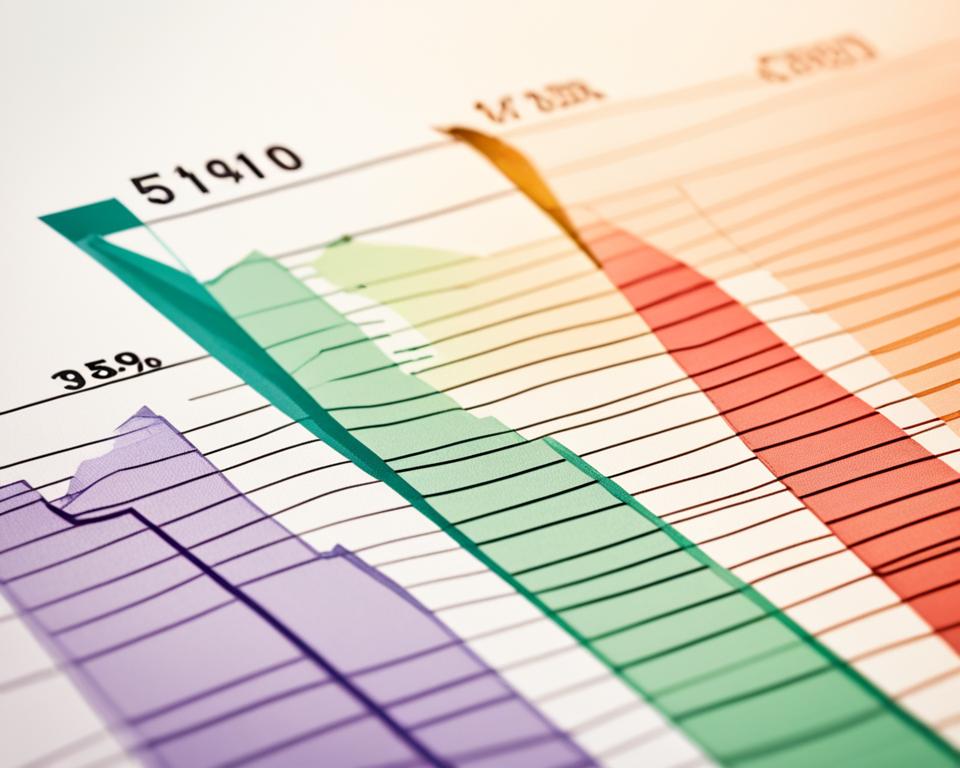
How Inflation Affects Dividend Valuations
Increased inflation typically exacerbates market volatility and can potentially depress stock values. This can largely be attributed to inflated expenses driven by interest rates, impacting corporate profitability and, subsequently, dividend payouts. Therefore, higher inflation necessitates either corrections in stock values or adjustments in valuation multiples to maintain portfolio balance and uphold investor interests.
Strategies for Combatting Inflation-Related Challenges
Active portfolio management, along with a sound understanding of market dynamics, can help investors navigate through the challenges posed by inflation. This entails implementing strategic adjustments within dividend portfolios, including reevaluating stock valuations, reassessing dividend payouts, and adjusting investment strategies based on the evolving financial landscape.
Here are some of the measures that can be taken to combat inflation-related challenges:
- Focus on Dividend Growth: Investors should place emphasis on stocks forecasting robust dividend growth as they tend to offset the impact of rising prices, thus providing a hedge against inflation.
- Invest in Inflation-Resistant Sectors: Certain sectors such as consumer staples, healthcare, and utilities are relatively resistant to inflation and can therefore prove to be safe havens during inflationary periods.
- International Diversification: Investing in international stocks can provide exposure to different economic cycles and potentially higher yields, thereby diminishing the impact of domestic inflation.
Navigating the realm of investing amid inflationary trends calls for both adaptability and vigilance. Through strategic portfolio adjustments and a focus on the implications of interest rate changes, investors can effectively combat ongoing challenges and secure their dividend portfolios.
Exceptions to Interest Rate Impact on Dividend Stocks
While observing the large climate trends of the financial sphere, it’s essential to mention that there are noteworthy exceptions to these rules. Certain actors in the market have shown resilience and adaptability, despite swings in the interest rate paradigm. Prominent among these are the dividend aristocrats and the entities in the financial sector, specifically banks.
The Unique Position of Banks and Dividend Aristocrats
In the landscape of rising interest rates, banks often find themselves in a favorable position. This is majorly due to the phenomenon of improved net interest margins that usually accompany a potent economy. In essence, the hefty interest that is paid by borrowers to the bank significantly outweighs what the bank pays to its depositors. Thus, this sector might prosper amidst such conditions, indicating a positive trend for financial sector dividends.
Another charismatic player in this plot is the Dividend Aristocrat. These are a select group of Fortune 500 companies which have a track record of consistently raising their dividends for at least 25 consecutive years. They are viewed as being reliable and resilient, often maintaining, and even increasing their dividends, regardless of fluctuating interest rates.
Sectoral Exceptions and the Financial Landscape
Examining the broader financial landscape, it’s fair to note that different sectors react differently to interest rate changes. While some might be adversely affected, others, in contrast, can indeed flourish. A clear understanding of these sectoral differences can help investors make well-informed decisions for their portfolios.
| Sector | Interest Rate Sensitivity | Dividend Performance During Rising Rates |
|---|---|---|
| Banks | Low | Potentially Enhanced |
| Dividend Aristocrats | Low | Consistently Strong |
| Utilities | High | Usually Negatively Impacted |
| REITs | High | Often Negatively Impacted |
Evaluating Dividend Stocks in a Changing Rate Environment
With interest rates in constant fluctuation, investors need to adequately evaluate dividend stocks to ensure they make sound investment decisions. It’s a process that demands intense scrutiny of dividend growth potential and stock valuation, as well as the identification of resilient dividend payers. This evaluation seeks out companies that can strategically transform excess capital into favorable shareholder returns – a key step towards safeguarding investments.
The Importance of Dividend Growth and Stock Valuation
The attractiveness of a dividend stock depends on a company’s ability to grow dividends at a rate that surpasses inflation and offers real return on investment. The promise of growing dividends attracts investors, causing a rise in stock price and, subsequently, these stocks become highly valued. Emphasis is thus placed on identifying companies in strong financial positions and boasting healthy future prospects.
| Considerations | Importance |
|---|---|
| Dividend Growth | Growth signals a company’s profitability, indicating the potential for increased future earnings |
| Stock Valuation | Valuation assesses the financial health of a company, aiding in the estimation of future growth potential |
Identifying Resilient Dividend Payers
In the unpredictable world of investing, resilience is an attractive attribute. Resilient dividend payers are companies that maintain or grow their dividend payouts despite the changing economic environments, including fluctuations in interest rates. Navigating through these turbulent economic seas, these companies often boast sturdy financial structures and remain profitable even during challenging times. Investors, therefore, look to these resilient entities as a form of safeguard against burgeoning economic uncertainties.
- Resilient dividend payers often have a strong financial structure.
- They maintain or increase dividend payouts in fluctuating economic environments.
- Resilience indicates a company’s adaptability, making it an attractive investment.
No single strategy fits all in the dynamic, intricate world of stock market investment. However, by properly evaluating dividend stocks in changing rate environments and identifying resilient dividend payers, investors can navigate these complex waters, ensuring their portfolios continue to grow.
Conclusion
In the dynamic world of finance, the implications of interest rate changes on dividend portfolio management are undeniably influential. These shifts significantly impact stock prices and sector performance, greatly affecting investor decisions and portfolio outcomes.
In navigating this ever-changing landscape, a savvy investor’s key to success lies in resilience and adaptability. Investors should consistently adjust their strategies to manage dividends in a changing rate environment, seizing potential opportunities and mitigating challenges stemming from interest rate fluctuations.
Investors must remain vigilant and responsive, focusing on sectors and companies that hold the promise of success even under fluctuating conditions. A keen understanding of these dynamics does not only ensure survival but also secures stable, long-term portfolio growth and resilience.
In conclusion, while the impact of interest rate changes on dividend portfolio management can be daunting, it also presents an avenue for investors to exhibit strategic prowess, leading to optimal portfolio growth in the long run.
FAQ
What are the implications of interest rate changes on dividend portfolio management?
Interest rate changes significantly impact dividend portfolio management. It can affect stock prices, sector performance, and investor decisions. Rising interest rates can hurt corporate profitability, straining the ability of companies to issue dividends and making fixed-income securities more appealing. Investors need to adapt their strategies continuously to these changes, mitigating risks while identifying companies that can thrive in changing rate conditions.
How do dividends contribute to total returns?
Dividends have historically played a significant role in equity returns. According to Standard & Poor’s, dividends contribute around one-third to U.S. stock returns. Dividends represent after-tax profits distributed to shareholders, often paid quarterly, thus representing a steady source of income.
How can we decipher dividend payout ratios?
Dividend payout ratios are calculated annually and express the relationship between dividends per share (DPS) and earnings per share (EPS). These ratios vary across industries and indicate the sustainability of dividends, with lower ratios indicating better sustainability.
How do changes in interest rates affect different sectors?
Changes in interest rates can significantly impact sectors like utilities, telecommunications, and REITs, which often carry high debt. Rising rates increase these sectors’ debt servicing costs, reducing their profitability and ability to maintain attractive dividend yields.
How do higher interest rates affect corporate profitability and dividends?
Rising interest rates can squeeze corporate profitability by increasing debt costs, particularly for high-leverage companies, hindering their capacity to issue dividends. A stronger U.S. dollar resulting from rising rates can also reduce foreign earnings, affecting overall profitability and dividend payments.
How do changing interest rates affect the competition between dividend stocks and fixed-income securities?
As bond yields rise with increasing interest rates, dividend stocks become less attractive in comparison. This changes asset allocation decisions, with investors seeking the most optimal yield balance.
How does inflation affect dividend portfolios?
Higher inflation often necessitates strategic adjustments in dividend portfolios as it impacts valuations. It typically increases volatility and can depress stock values due to inflated interest-driven expenses.
Are there any exceptions to the impact of interest rates on dividend stocks?
Yes, there are exceptions such as banks and Dividend Aristocrats, which may prosper during periods of rising interest rates. Banks can benefit from improved net interest margins while Dividend Aristocrats often raise dividends regardless of interest rates.
How should investors evaluate dividend stocks in a fluctuating rate environment?
Investors should consider a company’s balance sheet strength, margin potential, and earnings power, which are all critical in anticipating future value creation through dividends. It’s essential to look for companies that can transform excess capital into favorable shareholder returns.

